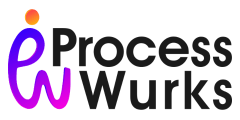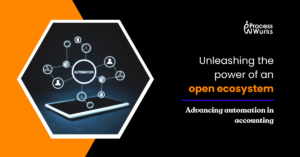
Share This Post
In today’s business landscape, operations management software plays a pivotal role in streamlining processes and achieving operational excellence. To help you choose the right solution, this blog highlights the top five essential features to consider. By understanding these key attributes, you can propel your operations toward seamless success.

What Is Operations Management Software?
Operations management software has tools for managing project resources and timelines, assigning tasks to workers, keeping track of progress, and, in some cases, managing logistics like purchasing and storing. The best operations management software also has tools to help teams communicate well, schedule workers, and train workers.
The goal of operations management software is to help businesses increase their output, cut costs related to labor, and make good use of both human and physical resources. Operations managers also use these tools to collect, analyze, and display data so that they can make good business choices.
Also Read: How ProcessWurks Simplifies Operations Management for Accounting Firms
How Does Operations Management Software Work?
Software for managing operations usually lets you break up big projects into smaller steps and jobs. You can then assign resources, like workers, to those jobs and keep track of their progress to make sure the work is done on time and on budget.

Good operations management software also gives you tools to make sure jobs are clearly defined and done right. Checklists, job forms, training guides, and videos are all ways to make sure work is done right. Quality control is an important part of operations management, which is why these tools are so important.
Scheduling is another common aspect of software systems for managing operations. Having the right people at the right job spot at the right time is so important to success. In the same way, mistakes in operations are often caused by bad planning and communication. That’s why the best operations management systems have great ways to communicate, such as secure group and one-on-one chats and updates.
Top Features to Look for in Operations Management Software
- Comprehensive Workflow Management:
A good program for managing operations should have strong tools for managing workflow. Look for features like assigning tasks, keeping track of progress, and automatic alerts to make sure that tasks are done well and smoothly across departments.
- Real-time Data Analytics:
The program should have powerful data analytics tools to gather, analyze, and display key performance indicators (KPIs). Real-time data help people make smart decisions, find bottlenecks, and keep improving processes.
- Inventory and Resource Management:
Look for tools with features for keeping track of inventory and assigning resources. This makes it easier to keep track of stock levels, cuts down on waste, makes the best use of resources, and makes sure that materials and tools are always available when they are needed.
- Integration and Scalability:
Think about software that works well with current systems, like ERP or CRM platforms, and can be added to as needed. Also, flexibility is important as your business grows, so make sure that the software can handle more users and more data.
- Collaboration and Communication Tools:
Software for managing operations should make it easy for team members to talk to each other and work together. Look for features like shared calendars, document sharing, and chat that make it easy for everyone in the group to work together and share information.
Keep in mind that your organization’s needs may be different from others, so give the most weight to features that help you meet your business needs and long-term goals. By carefully thinking about these key features, you can choose operations management software that boosts productivity, improves efficiency, and helps your business succeed as a whole.
Also Read: How to meet Tax season challenges as an accountant or bookkeeper with ProcessWurks
Top 5 Free Operations Management Software
1 SafetyCulture (used to be called iAuditor)
Why should I use SafetyCulture?
SafetyCulture is a powerful digital platform that industry leaders can use as an operations management software to streamline processes and make choices quickly about how to coordinate production based on the data they have collected. SafetyCulture is both a web-based program and a mobile app that helps businesses keep track of their teams’ scheduled chores in a quick and easy way.
How to Use SafetyCulture as a Software for Running Operations
- Convert a paper plan you already have or make one from scratch.
- You can now use your digital form anywhere, even when you’re not online, with your phone or computer. Through the SafetyCulture form app, you can also send the form to the right people.
- Once the digital form is filled out, the information is quickly sent to the cloud as a backup. If your inspection or assessment was done without being connected to the internet, the data will instantly sync the next time you connect to the internet.
- Even when you’re not online, you can still make digital records of the forms you’ve filled out. When a form or template is properly filled out, these reports can also be sent automatically to certain people. Reports can be sent out in different ways by exporting them in different forms.
- Lastly, the SafetyCulture form builder can be connected to external Business Intelligence tools like Tableau, Power BI, and Excel Online to automate your process every time a form is filled out.
2 Bitrix24
bitrix24 as software for running tasks
Why Use Bitrix24?
Bitrix24 is software for managing a business. It is a single platform that gives you access to tools for Customer Relationship Management (CRM), real-time team collaboration, job management, and document management. It works best for teams that want a shared office where they can work together.
Features:
- Automated templates that save time on jobs that are done over and over
- Tools for getting in touch with clients and managing the CRM flow
- Company office with a private social network for better communication
- Document management (file storage and sharing, synchronization with a local computer, integrations, and processes for a document library)
- Website, home page, and online store builders are already built in.
3 Odoo:
Odoo as a tool for managing business
Why Use Odoo?
Odoo is all-in-one Enterprise Resource Planning (ERP) and operations management software that companies use to fully automate processes. It has tools for CRM, e-commerce, banking, project management, managing inventory, and many other things.
Features:
- Software that is very flexible and totally free to use
- Warehouse management lets you supervise various stock locations
- Powerful tools for conversation that can help you keep track of things
- Point of Sale (POS) systems help managers get a clear picture of operations and stock.
- You can choose from different apps and use the ones that work best for your business.
4 Trello
as software for running tasks
Why Should I Use Trello?
Trello is an effective operation software and web-based project management app that lets teams change its features to meet their own project management needs.
Features of Trello:
- With Butler Automation, you can set up rules and commands on Trello boards without having to learn a lot of difficult code.
- Customized reminders of due dates that you can change in 8 ways
- Simple drag-and-drop writing tools
- Labels, tags, and comments are used to keep track of jobs.
- There is a dark setting for apps on Android and iOS.
5 Asana
Why Use Asana?
Asana is a piece of software for running a business that helps teams make group work management easier so that production and planning go smoothly. Organize, keep track of, and handle your tasks in an effective and efficient way.
Features:
- Offers a variety of models for common projects that you can copy and change, or you can make your own and customize it.
- Use Asana’s auto-promotion tool to put tasks that need to be done right away at the top of the list. Hide tasks that can be done later to avoid getting sidetracked.
- You can add jobs to more than one project without having to do them twice.
- Using the Status Updates tool, you can make quick notes and send them to the right people.
- Set up team pages so you can see all of your team’s work in one place.
Benefits of Using Operations Management Software
When workers need to work from home, it can be very hard to rely on manual processes. It has also been said that this can cause some small businesses to fail because they weren’t able to quickly change to the digital transformation of their industry during disruptions in the past few years.

One of the best things about using operations management software is that it’s easy to change to fit your business’s needs. It also improves accountability and transparency and makes it easier to keep correct records.
Key Features of Software
Here are some of the most important things to look for in operations management software when picking the right one for your business:
- Planning for both production and service
- Scheduling
- Managing the staff
- Project management
- Time and expense control
- Reporting and analytics for document handling
- Audit management
- Web-based
- User-friendly cellphone version
How to Choose the Right Business Software
One size does not fit all, and the same is true when picking the right operations management software for your business.

There are many things to think about, such as the key features you need and other things like:
- How big your business is
- How well the software can handle the number and types of jobs you do
- How much does the software cost and what plans are offered
When picking operations management software, you should also think about the following:
- Would it work well with the platforms and methods you already use?
- Is it simple and easy to use?
- Is it accessible on different devices?
Conclusion:
The correct operations management software may boost corporate efficiency and effectiveness. Prioritizing the five essential features discussed in this blog—comprehensive analytics and reporting, automation, scalability and flexibility, integration, and user-friendly interface—can ensure that your chosen software meets your organization’s unique needs. Remember, the success of your operation depends on educated decisions and technology that helps your people work smarter, not harder. So take the time to compare software options and pick one that can streamline procedures, enhance productivity, and sustain growth. With the proper operations management software, you can handle modern business and stay ahead in a changing industry.
Want to automate your firm? Try ProcessWurk free trial today
ONE Software to run your entire business. From Marketing to Sales to Client on-boarding to Client deliverables to Firm Operations
More To Explore





